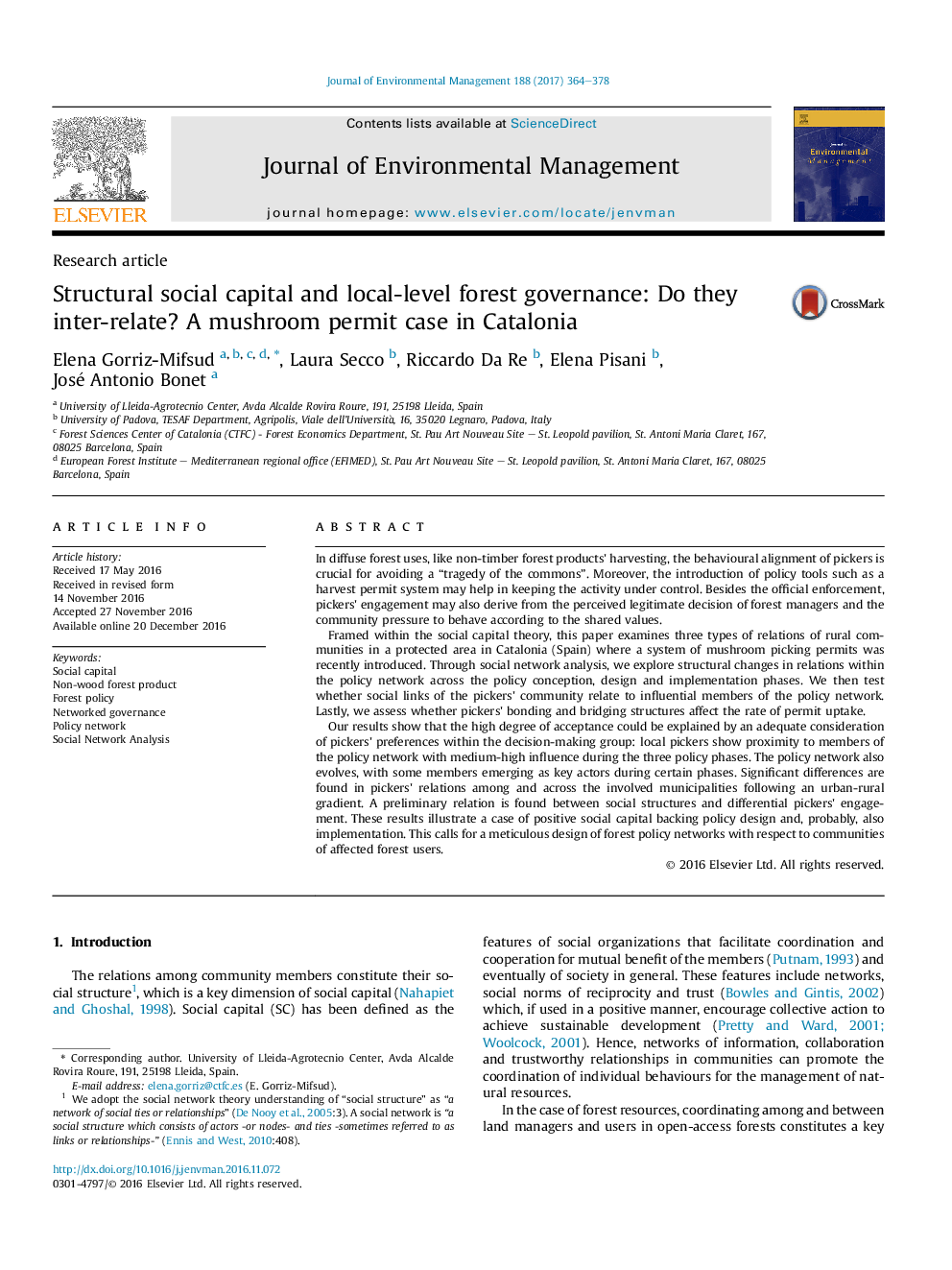| کد مقاله | کد نشریه | سال انتشار | مقاله انگلیسی | نسخه تمام متن |
|---|---|---|---|---|
| 5117152 | 1485227 | 2017 | 15 صفحه PDF | دانلود رایگان |
- Structural social capital is studied in the launch of a mushroom picking permit.
- The policy network changes its relational structure during the policy process.
- Pickers' links to influential decision-makers may contribute to policy acceptance.
- Bonding and bridging social capital of pickers follow an urban-rural gradient.
- Pickers' relations seem to explain their engagement in the policy reform.
In diffuse forest uses, like non-timber forest products' harvesting, the behavioural alignment of pickers is crucial for avoiding a “tragedy of the commons”. Moreover, the introduction of policy tools such as a harvest permit system may help in keeping the activity under control. Besides the official enforcement, pickers' engagement may also derive from the perceived legitimate decision of forest managers and the community pressure to behave according to the shared values.Framed within the social capital theory, this paper examines three types of relations of rural communities in a protected area in Catalonia (Spain) where a system of mushroom picking permits was recently introduced. Through social network analysis, we explore structural changes in relations within the policy network across the policy conception, design and implementation phases. We then test whether social links of the pickers' community relate to influential members of the policy network. Lastly, we assess whether pickers' bonding and bridging structures affect the rate of permit uptake.Our results show that the high degree of acceptance could be explained by an adequate consideration of pickers' preferences within the decision-making group: local pickers show proximity to members of the policy network with medium-high influence during the three policy phases. The policy network also evolves, with some members emerging as key actors during certain phases. Significant differences are found in pickers' relations among and across the involved municipalities following an urban-rural gradient. A preliminary relation is found between social structures and differential pickers' engagement. These results illustrate a case of positive social capital backing policy design and, probably, also implementation. This calls for a meticulous design of forest policy networks with respect to communities of affected forest users.
Journal: Journal of Environmental Management - Volume 188, 1 March 2017, Pages 364-378
